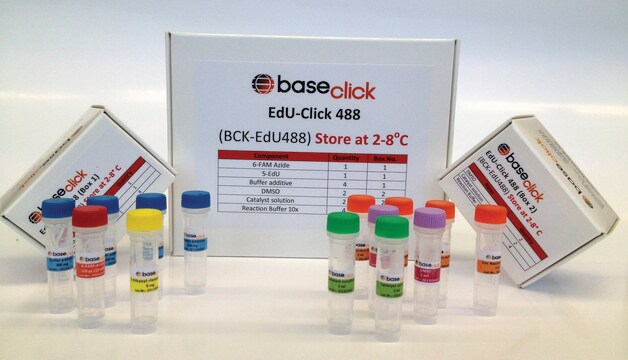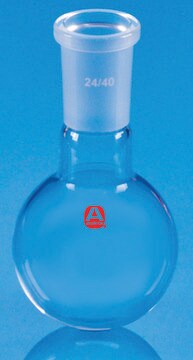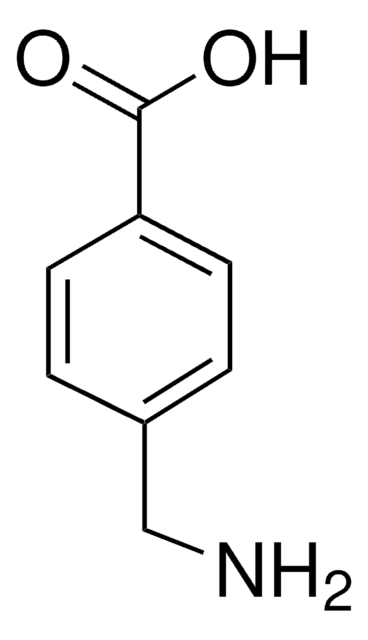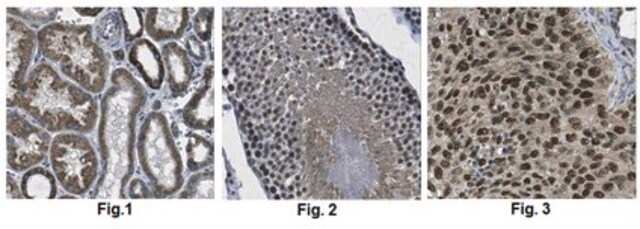05-1320-M
Przeciwciało anty-EED, klon AA19
ascites fluid, from mouse
Synonim(y):
Białko WD wiążące się z ogonami cytoplazmatycznymi integryny 1, rozwój ektodermy embrionalnej
About This Item
Polecane produkty
pochodzenie biologiczne
mouse
Poziom jakości
forma przeciwciała
ascites fluid
rodzaj przeciwciała
primary antibodies
klon
monoclonal
reaktywność gatunkowa
human, mouse
metody
western blot: suitable
izotyp
IgG2aκ
numer dostępu NCBI
numer dostępu UniProt
docelowa modyfikacja potranslacyjna
unmodified
informacje o genach
human ... EED(8726)
mouse ... Eed(13626)
Opis ogólny
Specyficzność
Immunogen
Zastosowanie
Epigenetyka i funkcje jądrowe
Apoptoza i rak
Biologia chromatyny
Jakość
Western Blot Analysis: 1:5,000 of this lot detected EED on 15 μg/mL of A431 cell lysate.
Opis wartości docelowych
Postać fizyczna
Przechowywanie i stabilność
Aby uzyskać maksymalny odzysk produktu, należy odwirować fiolkę przed zdjęciem korka. Unikać powtarzających się cykli zamrażania/rozmrażania, które mogą uszkodzić IgG i wpłynąć na działanie produktu.
Komentarz do analizy
Lizat komórek A431
Inne uwagi
Oświadczenie o zrzeczeniu się odpowiedzialności
Nie możesz znaleźć właściwego produktu?
Wypróbuj nasz Narzędzie selektora produktów.
Kod klasy składowania
12 - Non Combustible Liquids
Klasa zagrożenia wodnego (WGK)
WGK 1
Temperatura zapłonu (°F)
Not applicable
Temperatura zapłonu (°C)
Not applicable
Certyfikaty analizy (CoA)
Poszukaj Certyfikaty analizy (CoA), wpisując numer partii/serii produktów. Numery serii i partii można znaleźć na etykiecie produktu po słowach „seria” lub „partia”.
Masz już ten produkt?
Dokumenty związane z niedawno zakupionymi produktami zostały zamieszczone w Bibliotece dokumentów.
Nasz zespół naukowców ma doświadczenie we wszystkich obszarach badań, w tym w naukach przyrodniczych, materiałoznawstwie, syntezie chemicznej, chromatografii, analityce i wielu innych dziedzinach.
Skontaktuj się z zespołem ds. pomocy technicznej



![Dichlorotriphenylphosphine[bis(2-(ethylthio)ethyl)amine]ruthenium(II) 97%](/deepweb/assets/sigmaaldrich/product/structures/355/871/c9ac8b63-9a77-4c66-b545-cb7c41673aa4/640/c9ac8b63-9a77-4c66-b545-cb7c41673aa4.png)



